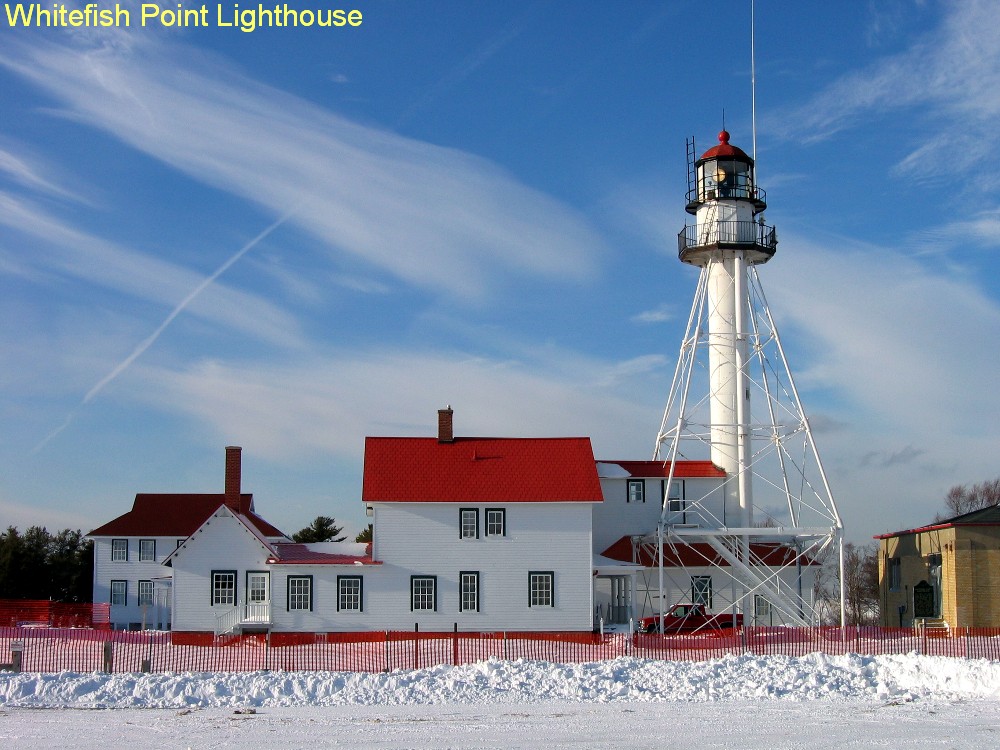
- Whitefish Point Lighthouse – National Oceanic and Atmospheric Administration
By MEGAN DURISIN
Capital News Service
While most lighthouses are in good shape, the people looking after them face a greater challenge than ever before, said Terry Pepper, executive director of the Great Lakes Lighthouse Keepers Association in Mackinaw City.
“When they first took ownership, there was a great surge from the public to get them restored,” Pepper said. “But they still need constant maintenance, and it’s more difficult to come up with money in these difficult economic times.”
The state Historic Preservation Office received 10 grants applications this year, including ones for the Cheboygan River Front Range, Grand Traverse and Whitefish Point lighthouses.
The money comes from the Michigan Lighthouse Assistance Program, funded through the sale of “Save Our Lights” specialty license plates, which raised $152,065 in 2009.
Denise Sachau, grants manager at the preservation office, said the program receives about $160,000 a year from the plate sales, a figure which has stayed steady in recent years.
“The license plate fund has stayed pretty consistent even with the economy,” said office architect Bryan Lijewski, with the program funding five to 10 projects each year.
The office has given between $79,000 and $200,000 annually since 2000 and has been able to assist all applicants, he said.
Pepper’s association owns the Cheboygan River Front Range Lighthouse and St. Helena Lighthouse, about 10 miles west of Mackinac Island. It wants the money to excavate the stone and brick foundation at the Cheboygan lighthouse and replace the drain, which leaks water into the basement during heavy rains, he said.
The association also received money in 2009. As a result, “the lantern no longer leaks and the deck around it no longer leaks,” Pepper said. “It looks the way it did in 1910.”
Michigan has 128 lighthouses – the most of any state – and most located on the shore are in good to excellent condition, Pepper said.
“In the water, it’s a different kettle of fish,” Pepper said. “Some are in deteriorated condition because the Coast Guard’s not maintaining them.”
The Coast Guard originally owned all Michigan lighthouses, but it transferred more than 70 to the state in 1999, which Sally Frye, secretary-treasurer at the Michigan Lighthouse Alliance in Traverse City, said was due to advances in GPS technology.
Since then, the agency has given others to government groups and nonprofit organizations.
The Coast Guard has maintained the lenses on active lighthouses, but the rest of their structures have needed significant attention, Frye said.
“It’s extremely expensive,” Frye said. “Many have not been used, so there’s maintaining the foundation, re-roofing, windows. It takes a great deal of money.”
Frye said the Coast Guard will transfer four or five more lighthouses to groups at the 2010 Great Lakes Lighthouse Preservation Conference in June, including two on Lake Huron and one on Lake Michigan.
Overall, lighthouse tourism is a big asset to the state, Frye said.
“They are the jewels of Michigan,” Frye said. “They are a wonderful draw in these economic times and can help the state if we work with tourism and the government.”
The Whitefish Point Lighthouse in Paradise attracts about 65,000 visitors each year, said Sean Ley, development officer for the Great Lakes Shipwreck Museum in Sault Ste. Marie.
Whitefish Point, the oldest operating lighthouse on Lake Superior, has applied for a grant this year, which Ley said would be used to restore the iron-pile skeletal tower.
Ley said it’s become more difficult for lighthouse keepers to obtain the matching funds necessary for grants in recent years, but his museum has been successful getting funds from the Michigan Lighthouse Assistance Program.
“We have a strong earned income from what we do,” Ley said, including bringing school groups to the museum and historic buildings at the site. “We manage the facility well.”
Frye said that most people who work as lighthouse keepers volunteer in the museums and gift shops and lead tours.
“Lots of groups are finding it successful by turning it into keeper programs,” Frye said. “People pay to stay a week or two and help with anything they’re interested in.”
Frye describes herself as “a lighthouse nut” and said she’s worked as a keeper at the Grand Traverse Lighthouse, among others.
Pepper said one of the biggest concerns for lighthouse groups around the country is how to attract younger people to their sites and on lighthouse cruises.
“It you look around at the gift shops, most of the people tend to be older,” Pepper said. “The gray-haired group tends to gravitate towards lighthouses.”
His association has a successful record involving young people, with groups of Boy Scouts from Ann Arbor doing “incredible things” at the St. Helena Lighthouse, Pepper said.
“We’ve had close to 1,000 Boy Scouts stay in the last 20 years,” Pepper said, with 27 earning their Eagle Scout awards by installing windows, preserving the ceiling and building an exact replica of its 1895 boathouse.
© 2010, Capital News Service, Michigan State University School of Journalism. Not to be reproduced without permission.